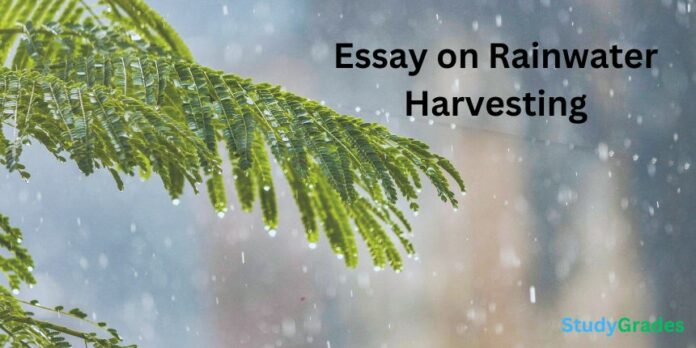Water is a precious resource that is indispensable for life on Earth. With the growing population and increasing demands for water, it becomes crucial to adopt sustainable methods to manage and conserve this vital resource. One such method that has gained prominence in recent years is rainwater harvesting.
What is Rainwater harvesting?
Rainwater harvesting is the process of collecting, storing, and using rainwater for various purposes. It involves the capture of rainfall from surfaces like rooftops, catchments, and other surfaces, and then directing it to storage tanks or reservoirs. This stored rainwater can be utilized for domestic, agricultural, and industrial purposes, providing a decentralized and eco-friendly water supply.
Rainwater Harvesting System Components
- Catchment Area: This is the surface from which rainwater is collected. It is typically the roof of a house or any impermeable surface.
- Gutters and Downspouts: These components help channel the rainwater from the catchment area to the storage facility.
- Filter: Filters are used to remove debris, leaves, and other contaminants from the collected rainwater.
- Storage Tank: The harvested rainwater is stored in tanks or reservoirs, preventing runoff and enabling its controlled use during dry periods.
- First Flush Diverters: These devices divert the initial portion of rainwater, which may contain pollutants, away from the storage tank.
Advantages of Rainwater Harvesting
- Water Conservation: Rainwater harvesting helps in conserving water resources by capturing and storing rainwater that would otherwise runoff and be wasted.
- Groundwater Recharge: The process aids in replenishing groundwater levels, preventing the over-extraction of water from aquifers and promoting sustainable groundwater management.
- Reduced Dependency on Municipal Supply: By utilizing harvested rainwater for domestic needs, there is reduced dependence on municipal water supplies, especially during water scarcity periods.
- Mitigation of Flooding: Rainwater harvesting reduces surface runoff, mitigating the risk of flooding during heavy rainfall.
- Cost-Efficiency: Once the initial investment is made in a rainwater harvesting system, the operational costs are relatively low, making it a cost-effective water management solution.
- Challenges and Solutions: While rainwater harvesting offers numerous benefits, there are challenges to its widespread adoption. These include the initial cost of installing a harvesting system, the need for public awareness, and potential water quality concerns. Addressing these challenges requires incentivizing rainwater harvesting, providing financial support, and implementing proper filtration systems to ensure the stored water’s quality.
Rainwater Harvesting Facts
- In 2001, Tamil Nadu became the first Indian state to make rainwater harvesting compulsory in every building.
- In 2019, Government of India initiated Jal Shakti Abhiyan (JSA), extending into 2021 also to improve water availability including groundwater conditions in the country including Rajasthan, Delhi and Haryana.
- “Jal Shakti Abhiyan: Catch the Rain” (JSA:CTR) was launched by the Hon’ble Prime Minister on March 22, 20221. In addition, under JSA:CTR, 10.65 Lakh water conservation/rain water harvesting works, 1.79 Lakh renovation works of traditional water bodies completed (as on 07.02.2022) in the country.
- The various rainwater harvesting schemes in India are ‘Mukhyamantri Jal Swavlamban Abhiyan’ in Rajasthan, ‘Sujalam Sufalam Abhiyan’ in Gujarat, ‘Jalyukt Shibar’ in Maharashtra, ‘Mission Kakatiya’ in Telangana, Jal Jeevan Hariyali in Bihar, ‘Jal Hi Jeevan’ in Haryana, ‘Neeru Chettu’ in Andhra Pradesh, and Kudimaramath scheme in Tamil Nadu.
Rainwater Harvesting Challenges
While rainwater harvesting systems offer numerous advantages, it’s essential to consider potential disadvantages and challenges associated with their implementation:
- Initial Cost: Installing a rainwater harvesting system can involve significant upfront costs, including the purchase of storage tanks, filtration systems, and associated infrastructure. This initial investment may be a barrier for some individuals or communities.
- Space Requirements: Adequate space is needed for the installation of storage tanks and other components of the rainwater harvesting system. In urban areas or on small properties, finding sufficient space for these structures can be challenging.
- Maintenance: Regular maintenance is essential to ensure the efficient functioning of rainwater harvesting systems. Filters need to be cleaned or replaced, and storage tanks should be periodically inspected for cleanliness and structural integrity. Neglecting maintenance can lead to contamination and reduced system effectiveness.
- Water Quality Concerns: The quality of harvested rainwater may be influenced by the catchment surface (such as the roof), atmospheric pollutants, and contaminants present in the collection and storage system. Without proper filtration and maintenance, there is a risk of waterborne diseases and contamination.
- Seasonal Dependence: Rainwater harvesting systems are highly dependent on seasonal rainfall. In regions with irregular or low rainfall, reliance solely on harvested rainwater may not provide a consistent and reliable water supply throughout the year.
- Complexity for Large-Scale Use: Implementing rainwater harvesting on a large scale, such as for industrial or agricultural purposes, can be complex. It may require advanced infrastructure, increased storage capacity, and sophisticated filtration systems, making the system more challenging to design and maintain.
- Freezing Concerns: In colder climates, the collected rainwater may freeze during winter, potentially causing damage to the storage tanks or distribution systems. Special measures need to be taken to prevent freezing and its associated complications.
- Regulatory Challenges: Depending on local regulations, obtaining necessary permits for rainwater harvesting systems may pose a challenge. It’s essential to comply with local laws and standards to ensure the legal and safe implementation of these systems.
- Limited Contribution to Groundwater Recharge: In some cases, the contribution of rainwater harvesting to recharging groundwater may be limited. The effectiveness depends on factors such as soil type, land use, and the permeability of the ground.
- Public Awareness: Lack of awareness and understanding about the benefits of rainwater harvesting can be a hindrance. Public education is crucial for the widespread adoption of these systems.
Conclusion: Rainwater harvesting is a sustainable and eco-friendly solution to address water scarcity and promote responsible water management. Its implementation not only conserves water but also contributes to environmental sustainability. Governments, communities, and individuals must work together to promote and adopt rainwater harvesting practices, creating a water-secure and resilient future for generations to come.
Essay on Rainwater Harvesting (100 Words)
Rainwater harvesting is a sustainable practice capturing and storing rainwater for various uses. Various states have also implemented their rainwater harvesting schemes, contributing to water conservation efforts in India.
In 2001, Tamil Nadu became the first Indian state to mandate rainwater harvesting in all buildings. The Government of India’s Jal Shakti Abhiyan (JSA) aims to improve water availability and groundwater conditions, with “JSA: Catch the Rain” launched in 2021. Under this initiative, numerous water conservation and renovation projects have been completed nationwide.
Stay Connected With StudyGrades for more Essays!






